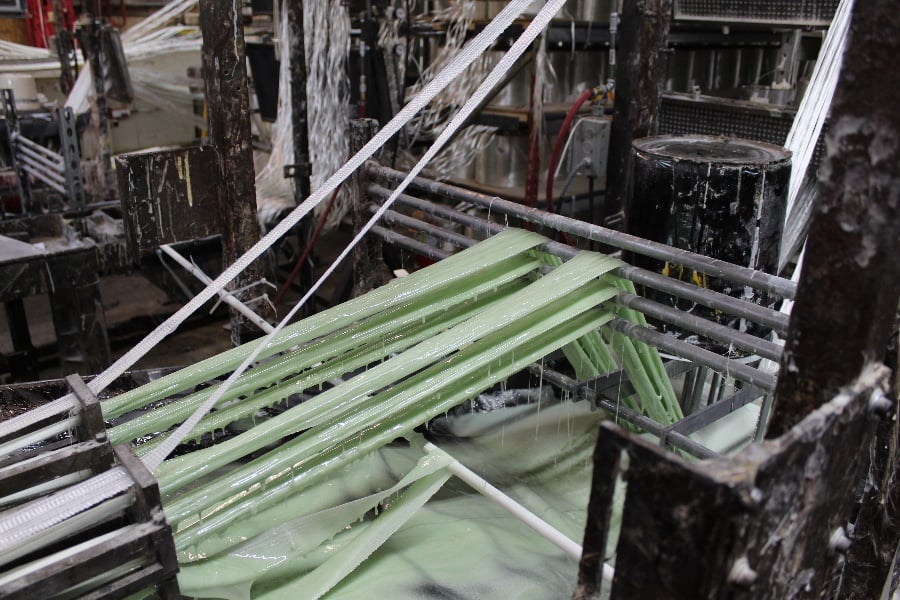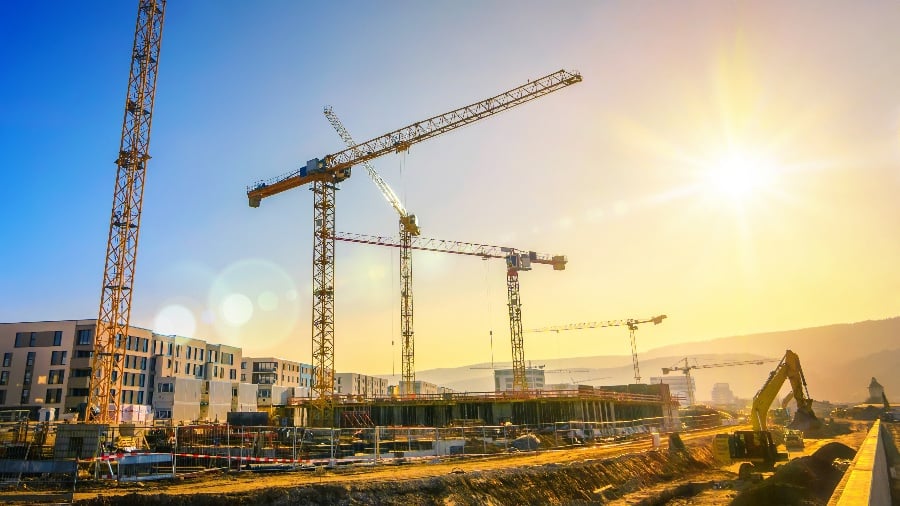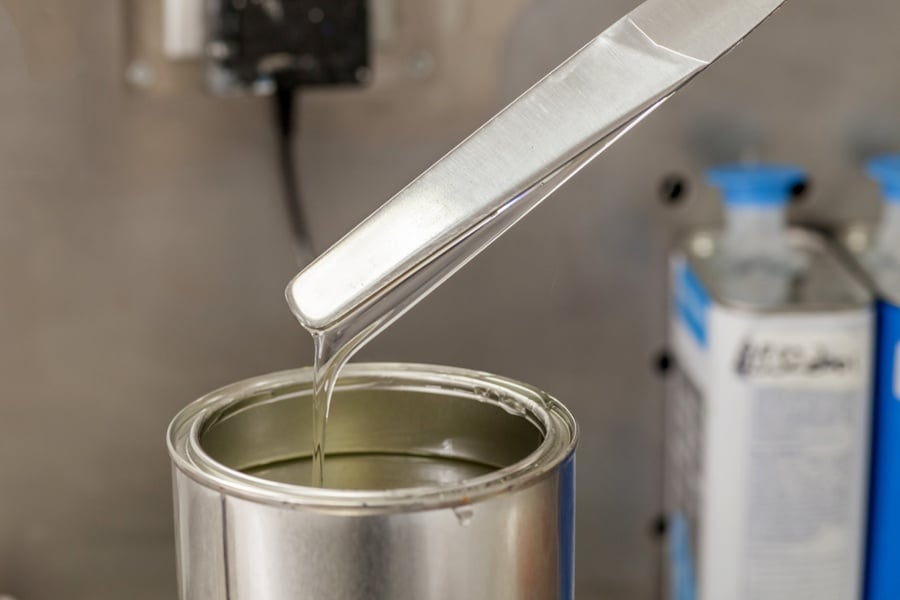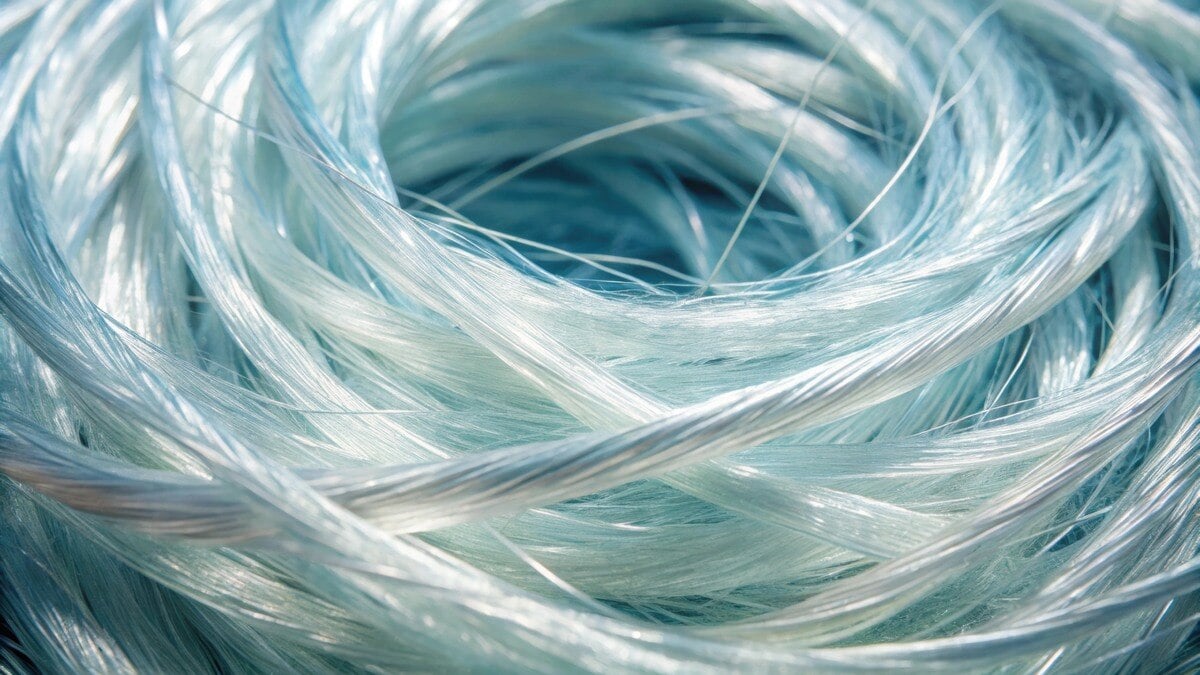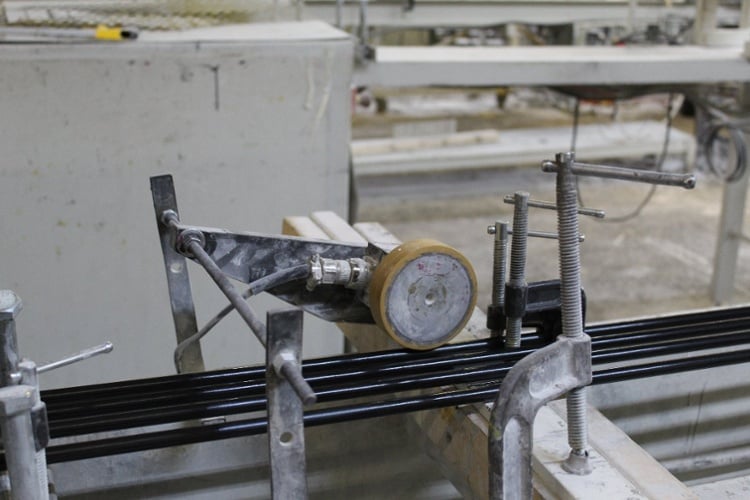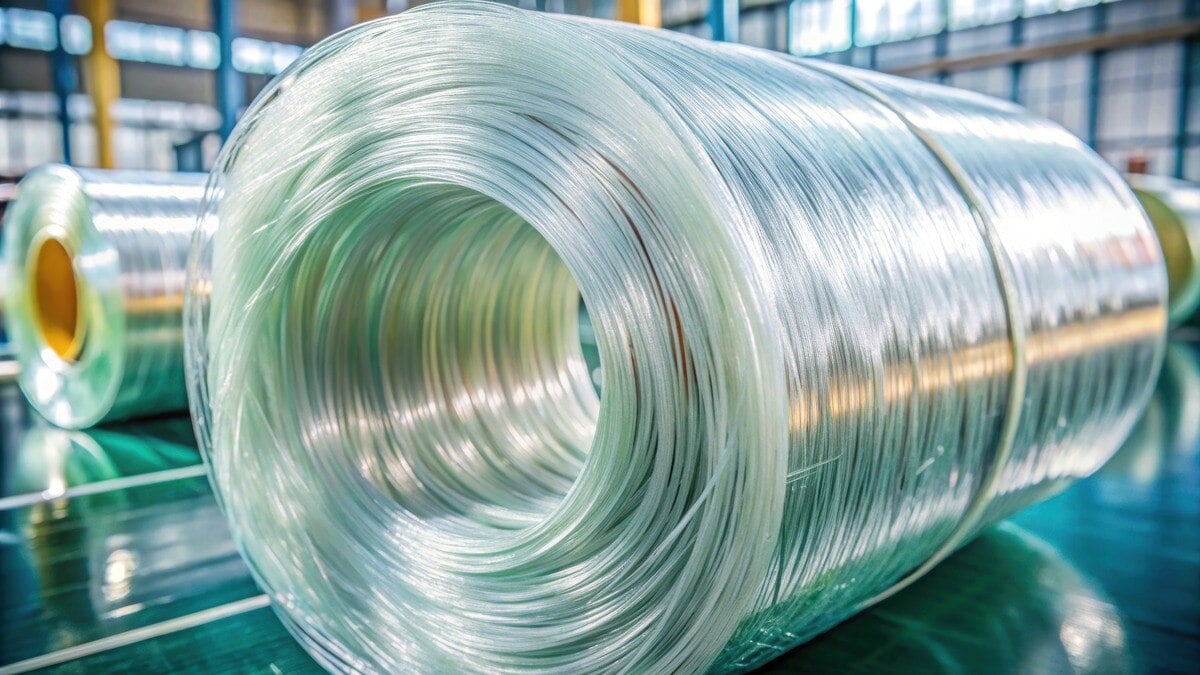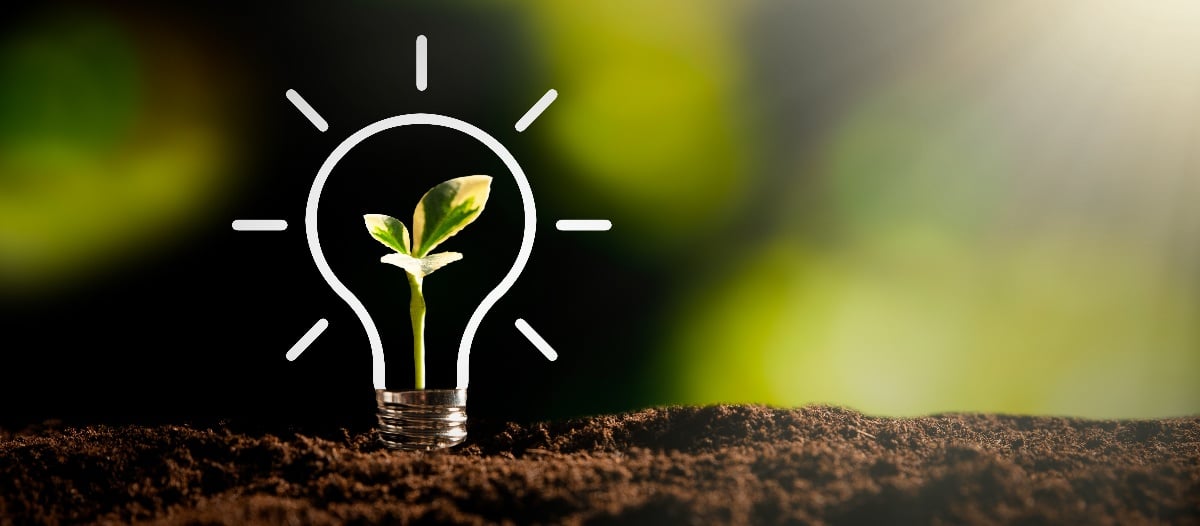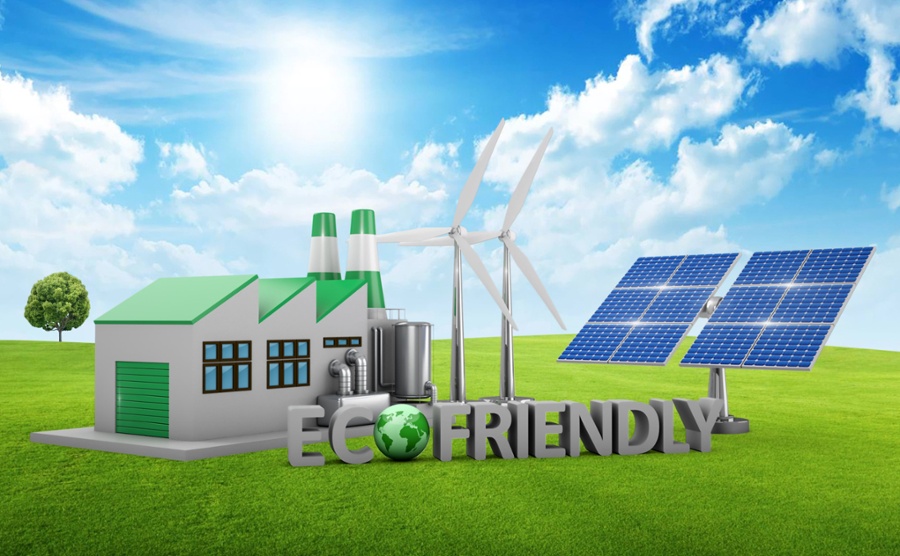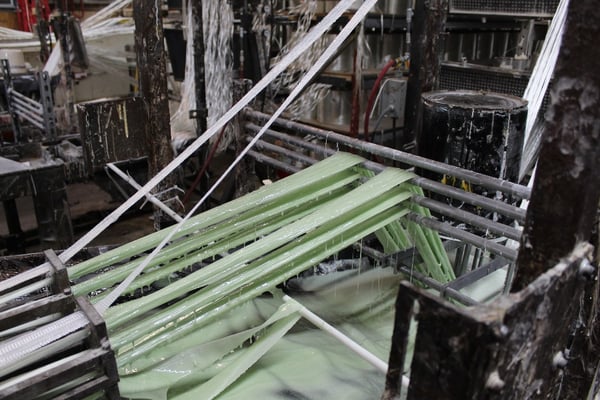
Pultruded products are becoming a staple of the global manufacturing economy, and pultrusion is now one preferred form of manufacture of composite parts for thousands of products in key application markets such as infrastructure, telecom, and utilities.
Pultruded products are predicted to be one of most promising segments of the composites industry over the next decade: the global pultrusion market is expected to reach an estimated $3.0 billion by 2023, and it is forecast to grow at a CAGR of 4.1% from 2018 to 2023 according to market research from Lucintel.
What is the pultrusion process?
Pultrusion is a manufacturing process that converts reinforced fibers and liquid resin into a fiber-reinforced plastic via a pulling method, rather than a pushing method (extrusion). This resulting plastic composite is also known as a fiber-reinforced polymer (FRP).
There are two main types of pultrusion systems – reciprocating (hand over hand) and continuous (cat track). Rovings (long, narrow bundles) of fiber reinforcements (typically glass or carbon) are positioned carefully by creels for correct placement in the composite before being fed into a guide plate.
The first pultrusion step is to pull the fibers continuously through resin impregnator to be saturated. The resin bath or wet-out may include epoxy, polyurethane, polyester or vinyl ester.
Fillers and other additives such as colorant, fire inhibitors and UV retardants are often blended into the process to increase the attractiveness, corrosive resistance, and long term performance of the finished product.
As the saturated fibers exit the impregnator, they enter the “pre former” tool which squeezes out excess resin and helps to shape the fiber reinforcements.
This resin impregnated, fiber reinforced composite is then pulled through a consistently heated steel die to cure the thermosetting resin and create a solidified polymer of the desired shape.
The hardened FRP is further pulled towards the cutting blade and where it can be easily cut to the desired length. Customized urethane pull blocks prevent the finished profiles from being cracked, distorted, or deformed during this final step of pultrusion. This final product is strong and lightweight.
What are common uses for pultruded products?
Some of the most common applications for pultruded products include products created to support:
- Construction, for items such as residential and commercial window, door, and frame profiles and reinforcements; pipe and electrical supports; and roll up door panels
- Utilities, for items such as utility poles, cross arms, and line markers; electrical lines and trunking; wastewater and water treatment components; non conductive ladder rails; and fiber optic cabling
- Infrastructure, for items such as bridge components; corrosion resistant guardrails; antenna housing; railway crossing arms; and highway sound barriers
Other uses for pultruded products span dozens of verticals, and include:
- Refrigeration components
- Armor plate
- Demisting blades
- Cable trays
- Static arrestors
- Tool handles
- Cored tubing
- Struts
- Perimeter fencing
- Decks
- Hand and guard rails
- Seating
Industries that depend heavily on pultrusion for specific manufactured parts that are strong and lightweight include the motor vehicle, railway, and aerospace manufacturing verticals, as well as industrial, construction, electrical, chemical, and civil engineer sectors.
What is the future of pultruded products?
The attractive long-term prospects for pultruded products were recently highlighted at the World Pultrusion Conference, which was organized in Vienna by the European Pultrusion Technology Association (EPTA) during the month of March 2019.
A record number of composites professionals from around the world discussed growth drivers for the pultrusion industry, dove deep into pultrusion’s potential for existing and emerging applications, and explored the latest developments in materials, testing and standardization for pultrusion manufacturing.
Dr. Elmar Witten, Secretary of European Pultrusion Technology Association (EPTA), stated, “While some leading companies use pultrusion to stay competitive and deliver exceptional, innovative products and services to end-users, there are many OEMs, suppliers, manufacturers and engineers that are not using pultrusion. The North American Pultrusion Conference meets an important need to educate and inform the industry about pultrusion.”
Pultrusion allows rapid, cost-effective, high-volume continuous manufacture of structural profiles and components that are strong, durable, long lasting, and lightweight.
Pultruded products are easy and inexpensive to transport, encourage forward thinking for simplified assembly of consumer or industry facing solutions, and mesh perfectly with global sustainability goals.
Infrastructure predicted to be top growth driver for pultrusion market
The infrastructure sector is predicted to be one major growth driver for pultruded composites, serving as a possible replacement for traditional steel rebar in the face of shrinking supply and rising tariffs.
Steel rebar corrosion is responsible for massive asset management costs, requiring millions of dollars to be spent over a structure’s lifespan to remedy issues with reinforced concrete infrastructure. In the US, over 54,000 out of 615,000 bridges are considered structurally deficient.
Steel rebar is a $200 million global market. Detailed research has shown that glass fiber reinforced plastic (GRP) rebar has the potential to maintain its microstructural integrity and mechanical properties for longer than 15 years. This can provide significant improvements in durability, reductions in life cycle cost reduction and enhanced long term performance for infrastructure owners.
The Halls River Bridge in Florida is next generation bridge initiative which was specifically launched to demonstrate the reliability and benefits of composite materials, including pultruded FRP rebar utilized in various points in the superstructure including the deck, barriers, approach slabs, and parts of the substructure and sheet pile walls.
Other growth opportunities for pultruded product implementation
There are many other sectors, industries, and verticals capable of receiving significant benefits from pultrusion techniques and pultruded products.
- In the oil industry, corrosion prone steel sucker rods can be replaced with lightweight pultruded carbon fiber composites for lower installation, maintenance, and energy costs.
- For 5g infrastructure and building elements, pultruded glass fiber laminates can deliver installation and durability benefits while minimizing attenuation of the shorter wavelength 5G signals.
- Spar cap structures for longer, more slender wind turbine blades can be improved with pultruded composites to increase turbine efficiency.
Standardization initiatives in the US and Europe will play a large part in determining who easily, quickly, and efficiently pultruded composites will be adopted across growing markets.
Technologies that can assist in non-destructive testing, as well as new advances in resin systems and curing agents that can safely increase pultrusion line speed without compromising the final product, will also play a part as pultrusion products gain more of the market share across all verticals.
The industrial demand for pultruded products is anticipated to be dominating segment over the next five years. High strength structural composites are crucial for the success and cost effectiveness of offshore oil drilling projects, cooling towers, and civil engineering projects, all of which will drive demand for pultruded composites.
Pultruded products deliver high level corrosion and heat resistance, significant strength-to-weight ratios, dielectric properties, and dimensional stability - all of which can benefit designers on construction projects. In addition, pultruded composites weigh up to 75% less than steel counterparts, making transportation costs a significant factor in their popularity.
Sustainability of pultruded products
One of the main attractions of pultruded products (besides the cost effectiveness of manufacturing, transportation, and minimized asset management) is their sustainability. Pultruded composites are extremely durable, have a long service life and low maintenance requirements, and result in lower energy consumption throughout a product's life at which point many can be recycled.
Roberto Frassine, President of European Composites Industry Association (EuCIA), stated: "Promoting the sustainability of composites is a long term strategy ... We strongly believe that sustainability and the circular economy are key to the future development of the composites industry."
The ability of pultrusion composites to replace steel and aluminum is more vital than ever in the face of tariffs and transportation costs. While aluminum extrusion products account for approximately 15% of all of the aluminum consumed, composite pultrusion products account for only 5% of all reinforced plastics produced. This leaves room for incredible market growth for pultruded products, which can increase sustainability on a global scale.
Additional benefits of pultruded composites
The pultrusion manufacturing process can produce nearly any constant cross-sectional shape in almost any size, allowing penetration of a vast range of market areas. Certain markets derive benefits from pultruded products above and beyond price competitiveness, thanks to corollary advantages which traditional competitive materials cannot supply.
- Corrosion resistance: Construction verticals can benefit from fiberglass pultruded products that resist both acidic and alkaline corrosives, making them ideal for use in outdoor or harsh environments.
- Electromagnetic transparency: Telecoms and wireless companies can benefit from fiberglass pultrusion’s ability to be readily penetrated by radio waves for support of two-way radios, cell phones, WiFi or Bluetooth connections.
- Electrical insulation: Safety is increased in charged environments with nonconductive pultruded fiberglass handled tools and fiberglass pultrusion ladders providing insulation from electrical shock.
- Thermal insulation: The lowered thermal transmittance provided by fiberglass pultrusion reduce condensation and support feature installations that require the retention of thermal properties through a wall cavity or on a surface.
For any project requiring superior dimensional stability, easy transportation and installation, close tolerance to specified parameters, and low maintenance over a long time period, pultruded composite products deliver. It’s the sustainable, cost effective solution not of the future, but of the here and now.

